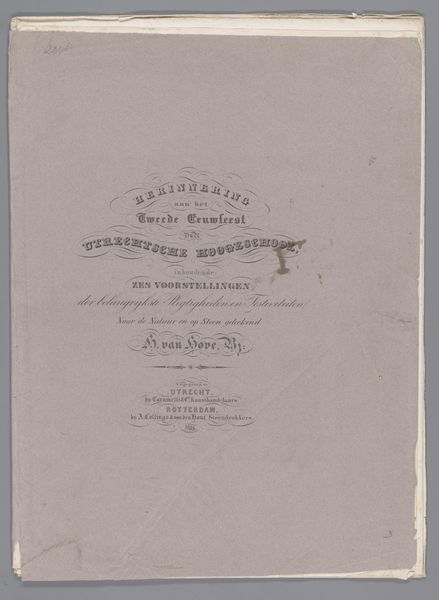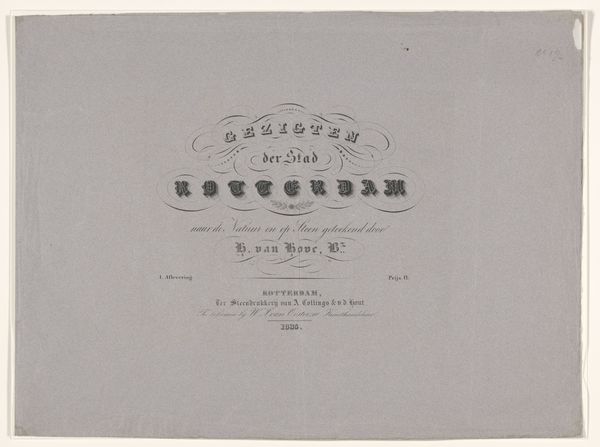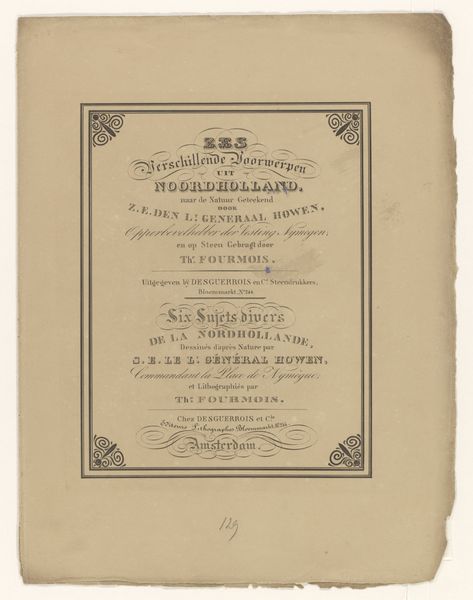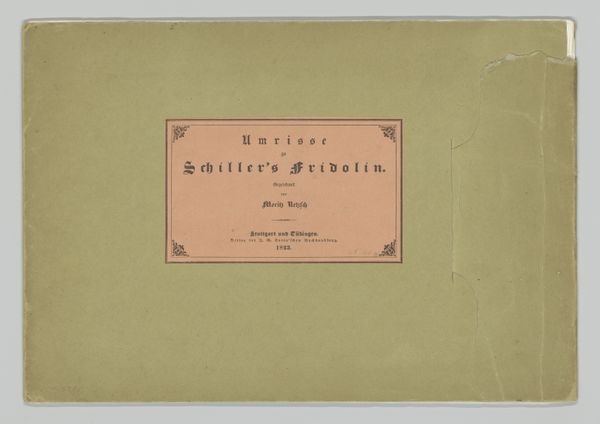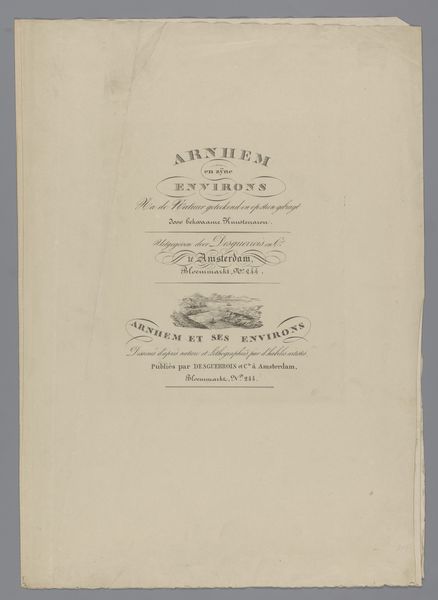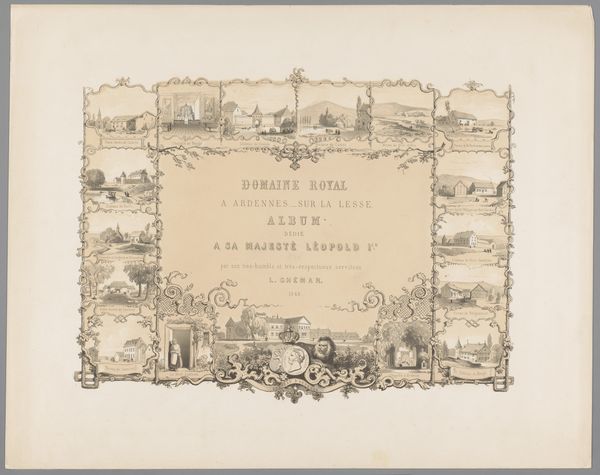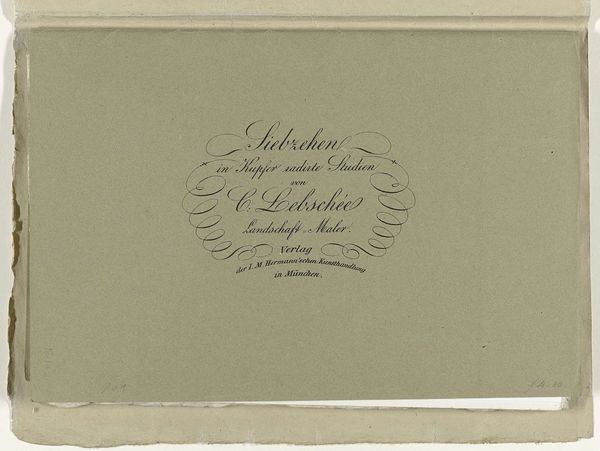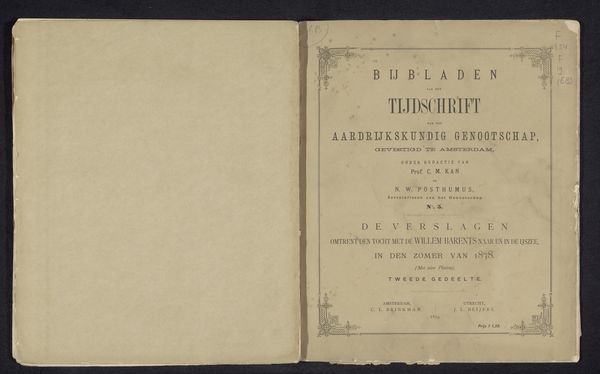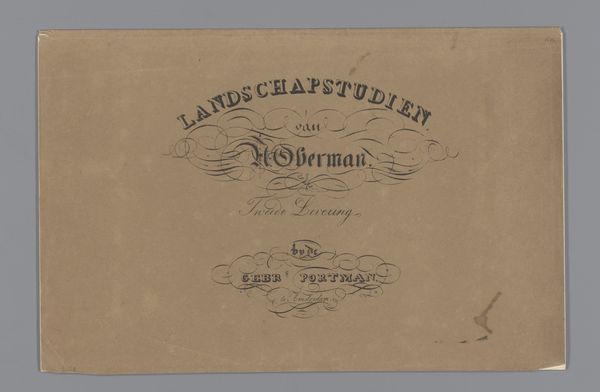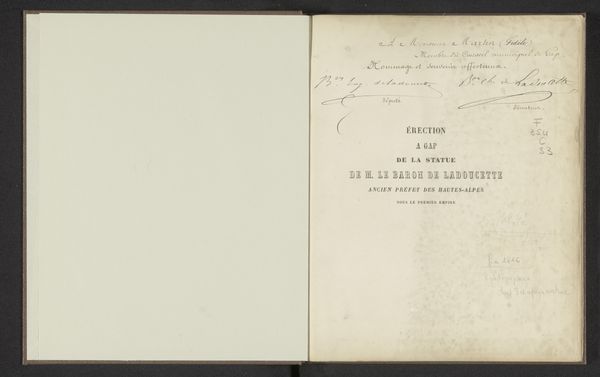
Binnenzijde omslag voor: beschrijving van afbeeldingen van gezichten te of bij Utrecht 1809 - 1843
0:00
0:00
graphic-art, print, typography
#
graphic-art
#
aged paper
#
homemade paper
# print
#
hand drawn type
#
personal sketchbook
#
typography
#
hand-drawn typeface
#
fading type
#
romanticism
#
stylized text
#
thick font
#
sketchbook art
#
historical font
Dimensions: height 428 mm, width 600 mm
Copyright: Rijks Museum: Open Domain
Editor: This is the inside cover for "Beschrijving van afbeeldingen van gezichten te of bij Utrecht" by Cornelis van Hardenbergh, dating from 1809 to 1843. It appears to be a print, featuring elaborate typography. The whole piece feels quite formal and traditional to me. How do you interpret this work, considering its historical context? Curator: It's intriguing, isn't it? What I see here isn't just a title page, but a window into the construction of civic identity. Consider Utrecht at this time. Who was included in these "gezichten," these faces? Who was excluded? The very act of compiling and presenting these images speaks to a desire to define and solidify a community, perhaps even enforce certain societal norms. Editor: So, you are suggesting this work might represent a power dynamic? Curator: Absolutely. The control over representation is always a form of power. Think about whose stories were being told and visualized during the early 19th century. What role did artists like Hardenbergh play in shaping those narratives? And, perhaps more importantly, what narratives were consciously or unconsciously suppressed? How does that resonate with the lack of representation we still struggle with today? Editor: That gives me a completely different perspective! I was just thinking about the typeface, but you're right, there's so much more to it. Curator: Indeed. Even the choice of a specific typeface connects to Romanticism, a reaction to Enlightenment, and perhaps to burgeoning nationalism. Consider the graphic arts more broadly. How did printmaking technologies shape public opinion, cultural memory, and the distribution of knowledge? Editor: I see, so what appears simple reveals complexities about history, power, and even social control. Thanks, I hadn't considered all that. Curator: Art often operates on multiple levels. Examining its social and political underpinnings helps us understand its lasting impact and its relation to contemporary questions of representation.
Comments
No comments
Be the first to comment and join the conversation on the ultimate creative platform.

